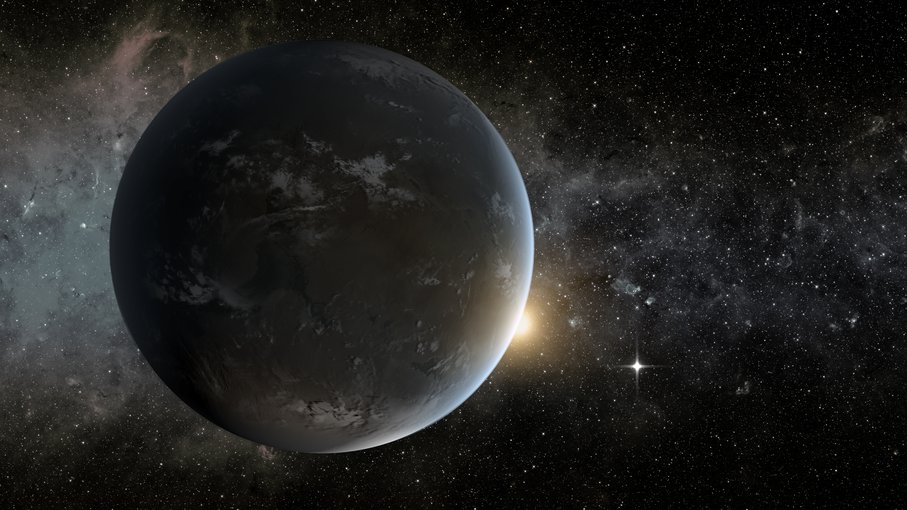
March 7, 2019
Research Highlight
“Goldilocks” Stars May Be “Just Right” for Finding Habitable Worlds

This is an artist's concept of a planet orbiting in the habitable zone of a K star.Image credit: NASA Ames/JPL-Caltech/Tim Pyle.
From NASA Goddard:
Scientists looking for signs of life beyond our solar system face major challenges, one of which is that there are hundreds of billions of stars in our galaxy alone to consider. To narrow the search, they must figure out: What kinds of stars are most likely to host habitable planets?
A new study finds a particular class of stars called K stars, which are dimmer than the Sun but brighter than the faintest stars, may be particularly promising targets for searching for signs of life.
Click here to read the full press release.
The study, “The K Dwarf Advantage for Biosignatures on Directly Imaged Exoplanets,” was published The Astrophysical Journal Letters. The work was supported in part through the NASA Astrobiology Institute (NAI) element of the NASA Astrobiology Program and the Nexus for Exoplanet System Science (NExSS). NExSS is a NASA research coordination network supported in part by the NASA Astrobiology Program. This program element is shared between NASA’s Planetary Science Division (PSD) and the Astrophysics Division.